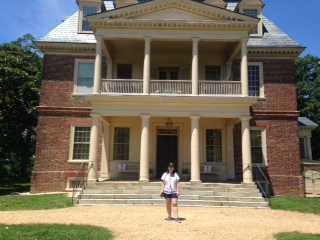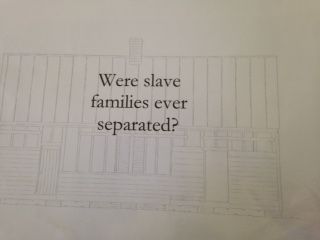by Jisu Song
Jisu Song is a sophomore from Richmond, Virginia not decided in major but minoring in Women, Gender, and Sexuality Studies (WGSS). She has been involved with the Race & Racism Project since 2019 and is currently serving in the Oral History Team. As a student, she is an executive member in WILL*, member of Sirens, and a peer advisors and mentors. She hopes to work for global audiences.
 I decided to go to Shirley Plantation because I wanted to see how big the plantation was and how the plantation is described toward tourist. During the general research about the plantation, I read many high ratings that complimented the site. Some of the comments mentioned that the site is very pretty, historically informed, and worth the price. From this research, before I arrived in the site, my expectation was very high about the tour and site. I expected the tour to be mostly talked about enslavement and how owner thoughts about enslavement. My expectation for Shirley Plantation was very high. However, my site visit did not fulfill my interest in learning more about how people were living in the past.
I decided to go to Shirley Plantation because I wanted to see how big the plantation was and how the plantation is described toward tourist. During the general research about the plantation, I read many high ratings that complimented the site. Some of the comments mentioned that the site is very pretty, historically informed, and worth the price. From this research, before I arrived in the site, my expectation was very high about the tour and site. I expected the tour to be mostly talked about enslavement and how owner thoughts about enslavement. My expectation for Shirley Plantation was very high. However, my site visit did not fulfill my interest in learning more about how people were living in the past.
Shirley Plantation is only an hour away from our campus at the University of Richmond. Shirley Plantation is the first plantation in Virginia, founded in 1613. This plantation has 12 generations of family living in the house until now, 2019. In the past, the plantation was present to grow tobacco and cotton and currently growing cotton, corn, soybean, and wheat.
During the tour, I expected more discussions about enslavement. I expected tour guide to talk about some information of how enslaved people lived in the house. I just could not believe how the tour only focused on the master’s action during the Civil War and their heroic actions that they have done in the past. The tour included that the house was once served as a hospital to serve 700 and more injured Confederate soldiers. The tour guide talked about the owner of the plantation wanted to serve as a Confederate soldier during his 60s because of his strong patriotic spirit. The tour guide mentioned that house slaves were treated better than other plantation’s enslaved people by allowing them to sleep in the second floor of the kitchen, laundry room, and room that they served with their family. The tour guide did not even mention the hundreds of enslaved people who worked in the farm nor did they mention the fact that they were sold and bought or punished by their owner. I have not heard anything about plantation enslaved people’s perspective on their work load, punishment, family conditions, house environment, and more. It was truly disappointing.
After the tour, I was able to visit different buildings around the master’s house. In that buildings, there was a folder explaining how enslaved people were treated. In the folder, there were shocking information about how enslaved people were treated. The story that I heard differently than the tour. Every enslaved people had to work in the plantation when the sun rises until sun down. Many of the enslaved people were working in the plantation field and about 25 enslaved people worked in the Great House, which is the house where the owner lived. The owner participated in the slave trade and bought and sold the enslaved people. The owner punished enslaved people by selling the slaves to separate them from family or by whipping them. Enslaved people usually got punished for refusing to work, running away, or stealing. In fact, the owner of this plantation sold six enslaved people because they stole hogs from neighboring farm. The story that I have read did not correspond to the story that I heard in the tour.
In the article called Lost Cause Ideology by Karen L. Cox explains how enslavement are justified. Lost cause is a word “to describe a particular belief system as well as commemorate activities that occurred in South for decades after civil war.” Lost cause includes the explanation of how our society has privileges in race, gender, and class. By giving more explanation of ‘southern way of life’ to enslavement, the crucial life that enslaved people went through lessen the harsh judgement from people. Even though owner of the plantation explains that they were the ‘better’ owner than their neighbors, enslaved people were necessary for the plantation to run, or that enslavement was happening everywhere it does not justify that they owned people. Through looking in the enslaved people’s perspective, it cannot uphold any justices that they had to go through because they were born in Africa or because they were born as Black. The site cannot forget to talk about the perspective of enslaved people and should not avoid talking about it.
After the site visit, I couldn’t stop thinking about how the full story might not be able to tell correctly to the visitors. During the tour, there were 3 children who came along. I just found it very disturbing about how only one-sided story is told to the younger generations. It is much easier to lose full story of the history or could lose the insight of enslavement. It cannot be only told that slavery in the plantation was not as harsh as neighbor plantations. They still owned enslaved people, and many were punished, attempted to run away, and faced harsh reality. I just worry that that with this tour there won’t be real stories to be heard to the younger generations.




